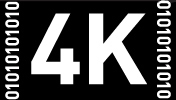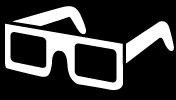

Peter Jackson’s decision to adapt J.R.R. Tolkin’s The Hobbit as three separate 2.5+ hour films is as misguided as his choice to shoot these pictures in the utterly uncinematic format of 48 frames-per-second digital 3D. This middle chapter of his elective trilogy has neither a beginning nor an ending. The Desolation of Smaug picks up right where An Unexpected Journey left off and stops just as abruptly as that film. Thus the movie is a lengthy series of fights, chases, scenic hikes, and (thankfully) quiet moments of downtime interspersed between all the narrow escapes and near misses. After the three Lord of the Rings pictures, there just aren’t enough fresh visuals and whimsical character moments to justify the epic scope of these movies. Every once in a while Jackson comes up with something inventive in one of the fight sequences, but these moments are so few and far between that they make you all the more aware of how rote these pictures have become. Smaug, the titular dragon, is well rendered but, honestly, once you’ve seen one digital dragon you’ve seen them all--and there’s been an abundance of digital dragons on film and TV over the past decade. Like most everything else in this film, Smaug engenders no sense of fear, wonder, or magic, and the excessive amount of screen time he is given only magnifies this problem. Had Jackson opted to make one 3 to 4 hour film from Tolkin’s novel we might have gotten a decent picture that wasn’t quite as much of a pumped up retread of his previous middle-Earth trilogy. Considering that the second installment of superior The Lord of the Rings series, The Two Towers, was itself bloated and redundant, it’s hard to imagine how the middle section of The Hobbit could not suffer the same fate three times over.
Regarding the much maligned High Frame Rate 3D technique Jackson developed for these films, the director promised fans that it would look “less fake” in this picture than in the first. Any film technology that engenders a statement like this should probably be avoided at all costs, but I was curious to see it if looked any less awful so I sought out an HFR-3D screening. I can report that the film’s interiors don’t look quite so much like plastic sets, as in the first Hobbit, but all motion, whether by characters within the frame or the sweeping camera moves, looks as artificial as a video game. This is especially true of the CGI characters, but the human movement also looks distinctly unnatural. I don’t think this is simply the fact that audiences have grown accustomed to seeing films shot and projected at 24 frames per second over the last 100 years. The aesthetic difference is between the two frame rates is comparable to the difference between incandescent and florescent light.





